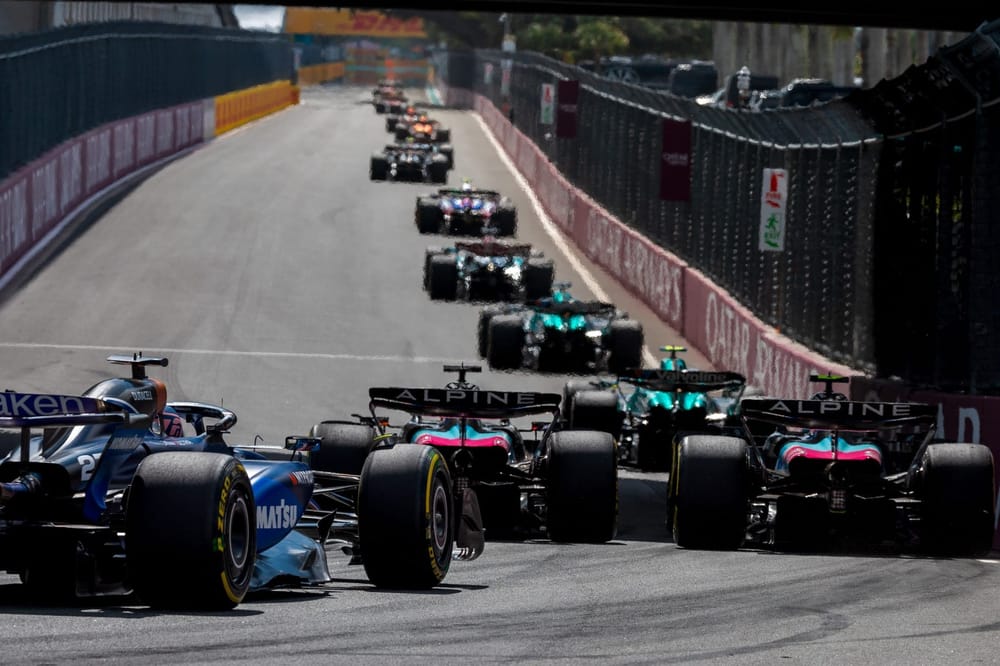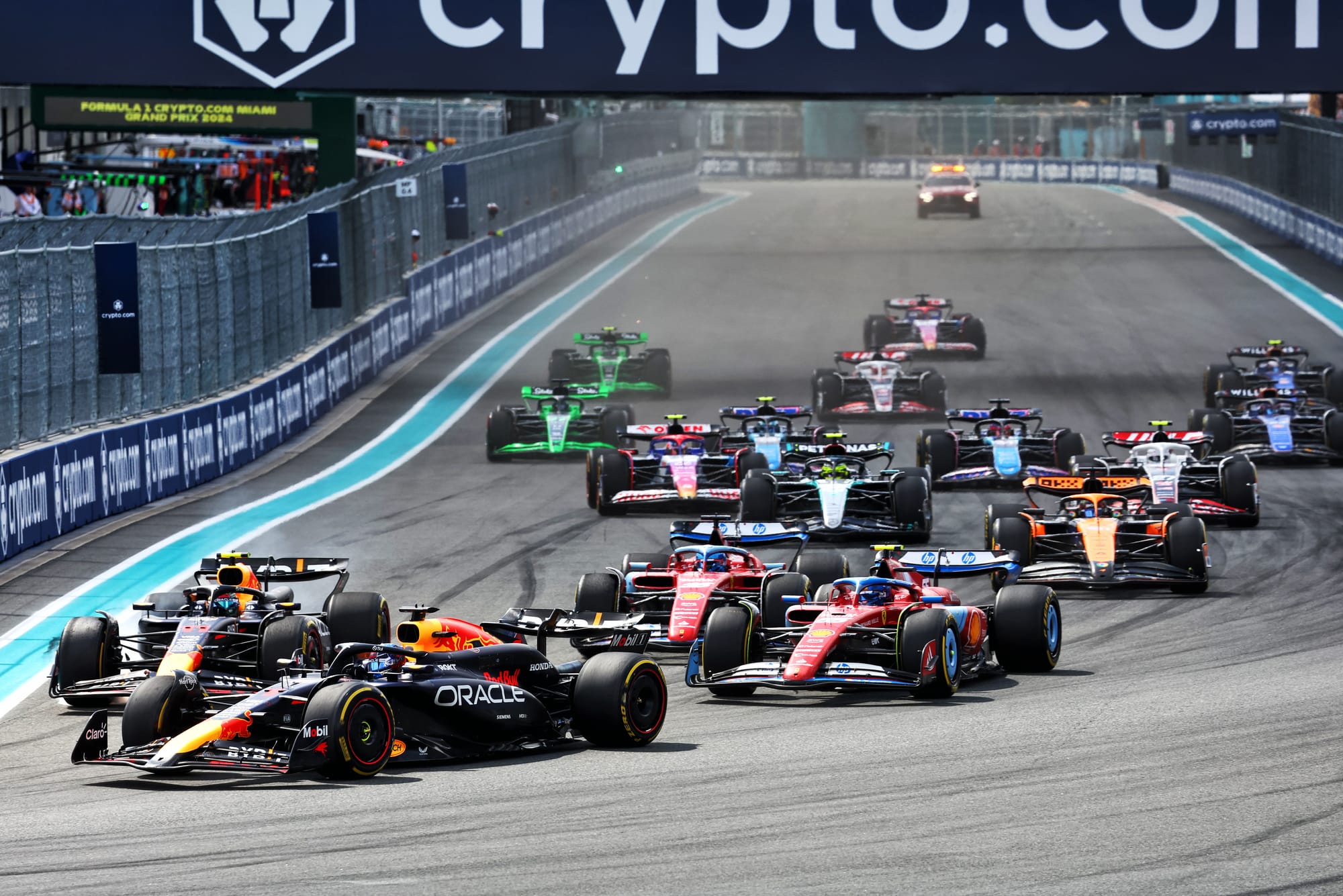Up Next

Formula 1 has new racing rules this year that are already influencing stewarding decisions before becoming fully regulatory in 2025.
What is allowed in battle was subtly changed ahead of the 2024 season with new formal guidelines that will be enshrined in the FIA International Sporting Code next year.
Several races, most recently the Miami Grand Prix, have now featured clashes between drivers that have led to the stewards referring to new guidelines that are not publicly available.
So, what’s prompted a change, and what do the new-for-2024 racing rules actually say?
WHAT'S CHANGED FOR 2024
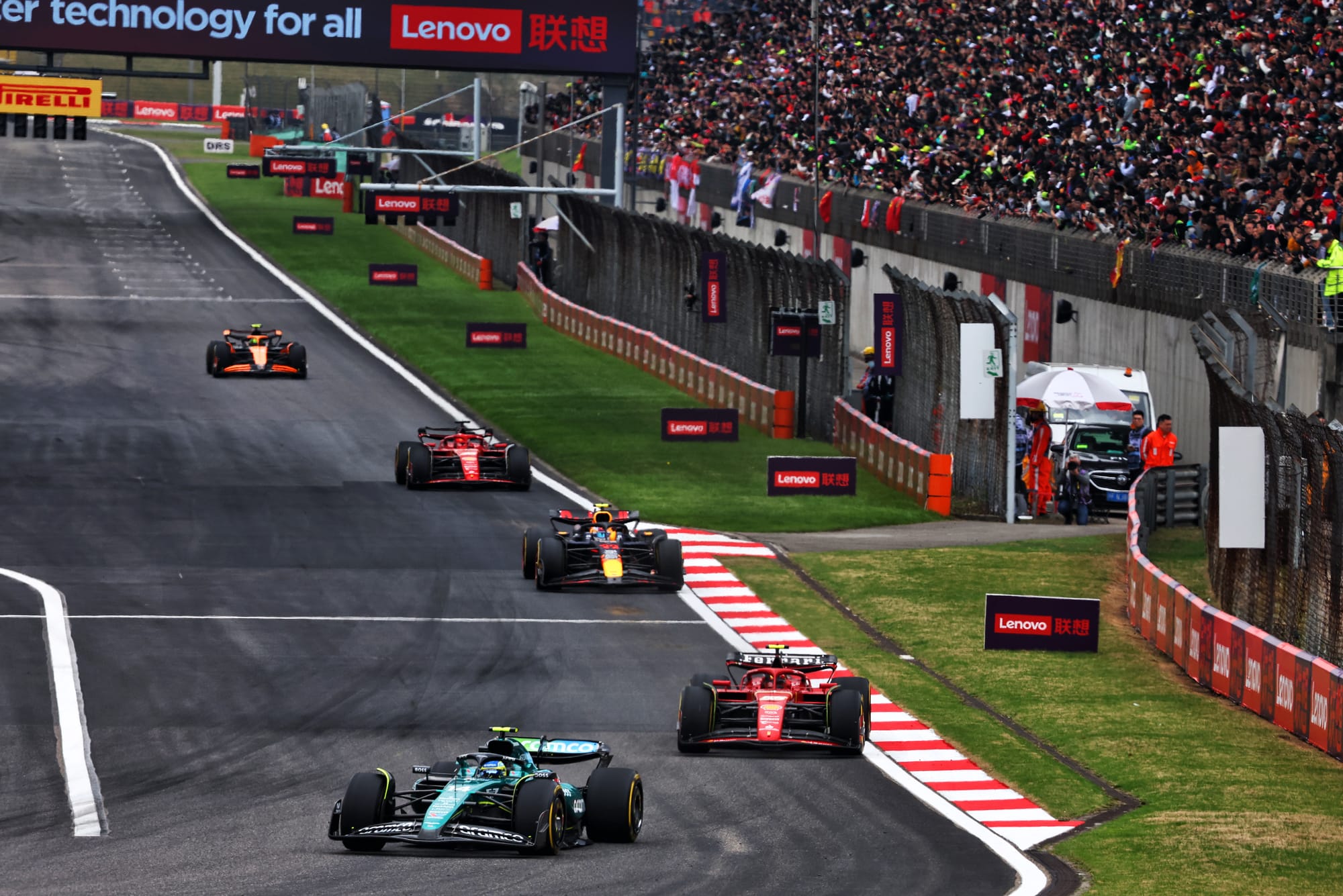
The changes come from a 2024 initiative to define the rules of racing more specifically than ever, and essentially codify the ‘let them race’ policy that has been pushed by governing body the FIA for several years.
They are a clear step on from two years ago when, following concerns about the consistency of decision-making and drivers not knowing what was allowed, a set of informal racing guidelines was introduced and shared in F1, F2 and F3.
This is far more wide-reaching as the official ‘Driving Standards Guidelines’ will apply to all categories of circuit racing with the intention of being a consistent reference for drivers and officials, and by extension those watching.
When this was first toyed with in 2022, some drivers interpreted the guidance differently, and there were often contradictions between what was on paper and what happened in reality.
Unsurprisingly, trying to specify ‘Car X needs to be this far alongside Car Y’ was too oversimplified, especially with no emphatic requirement to leave space on the exit of the corner.
The wording always implied anything was fair game as long as you got your front wheels alongside the other car's front wheels at the apex. It did not seem to matter how much entry speed you took in, or whether you ran the other car off the road on the exit.
One of the most encouraging parts of the 2024 guidelines is a clear acknowledgement early on that “racing is a dynamic process”, which stresses that the specific relative positions cited are just one element.
Factors being considered when reviewing an incident
- How did the cars get to the incident (for example late braking, diving in, moving under braking)?
- Was the manoeuvre late or optimistic?
- What could the drivers reasonably see, know, or anticipate?
- Could the manoeuvre be completed on the track?
- Was there understeer, oversteer or locking?
- Did someone position or handle their car in a way that contributed to the incident?
- Did the type of corner contribute to the incident (for example camber, kerbs, curve, or apexes)?
- What were the relative tyre compounds, age and grip levels?
All of these were relevant factors before. But now it is emphatically made clear they don’t just get overridden by basic, simplified guidance.
OVERTAKING ON THE INSIDE
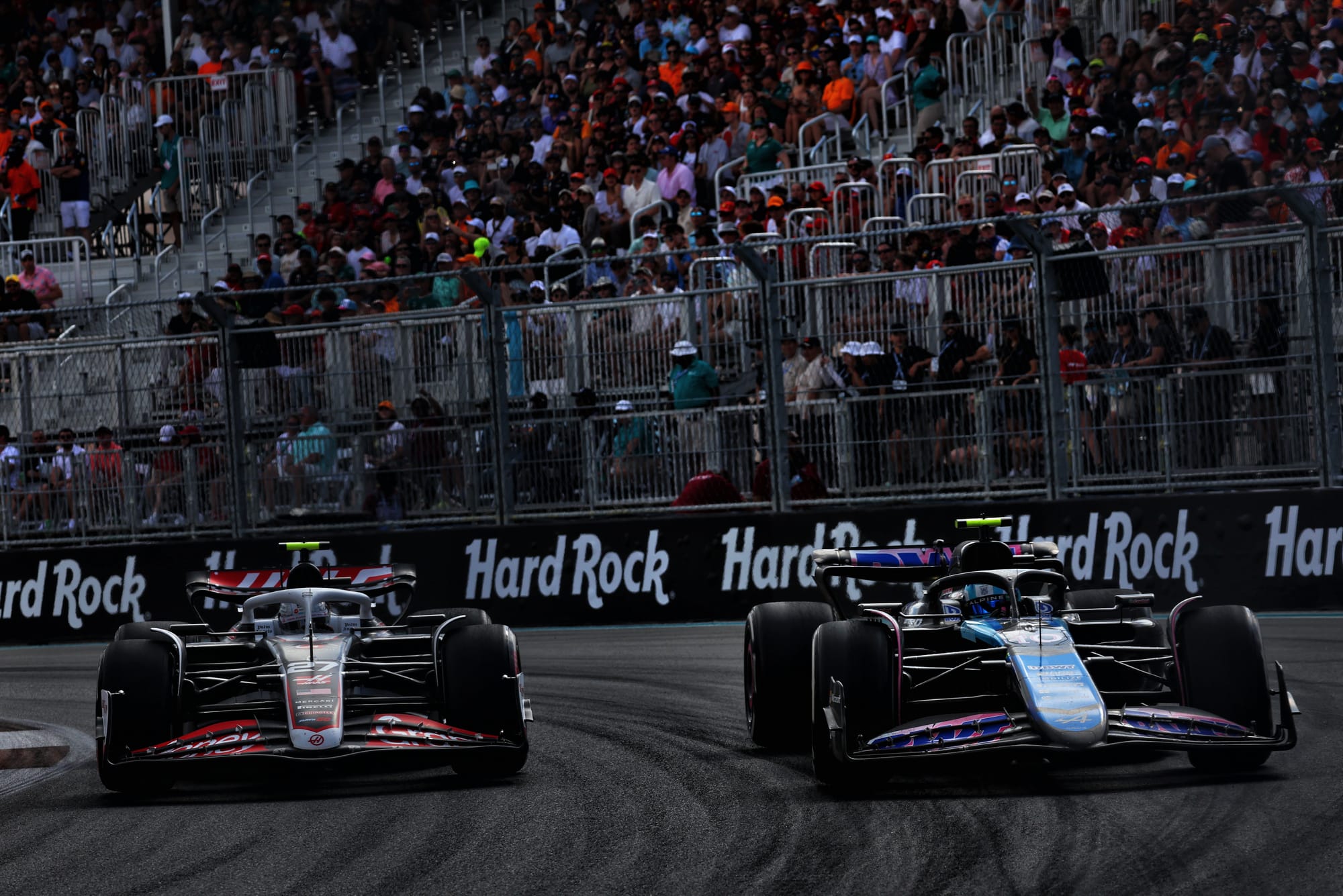
The new guidelines get specific for different overtaking moves and different situations.
For overtaking on the inside of a corner a driver must be given room if they satisfy the following conditions:
- Have their front axle at least alongside the mirror of the other car no later than the apex of the corner
- Be driven in a safe and controlled manner throughout the manoeuvre (which includes the entry, apex and exit)
- Without (deliberately) forcing the other car off the track at the exit, which includes leaving a fair and acceptable width for the car being overtaken from the apex to the exit of the corner
- Be able to make the corner within the track limits
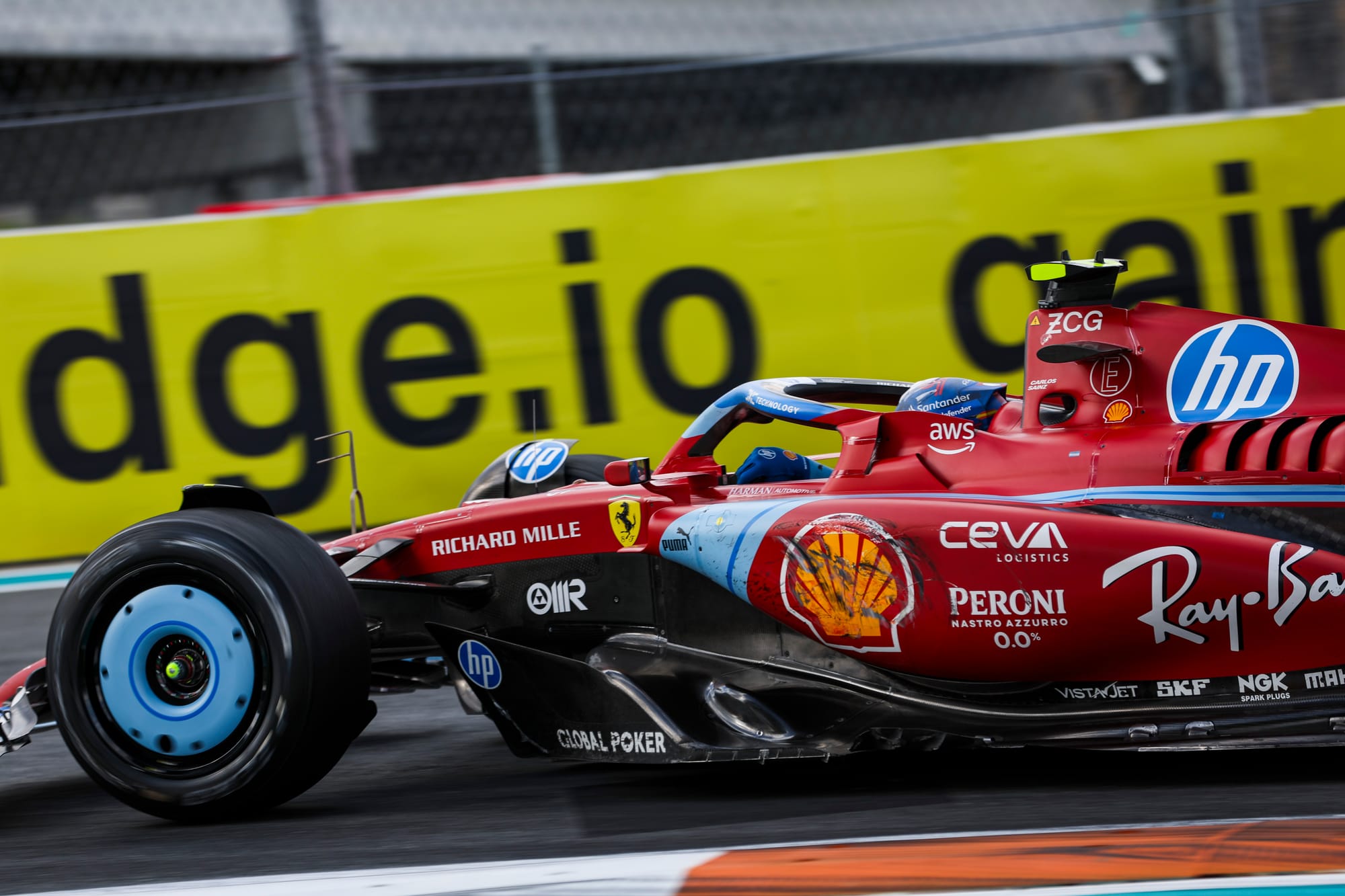
These rules show why Carlos Sainz got a penalty for his incident with Oscar Piastri in Miami. Sainz ticked most of these boxes but was not in a controlled manner as he clearly briefly lost control of the rear of the car, causing contact with Piastri.
Had Sainz avoided that brief rear locking it would have been a fair, legal move.
OVERTAKING ON THE OUTSIDE
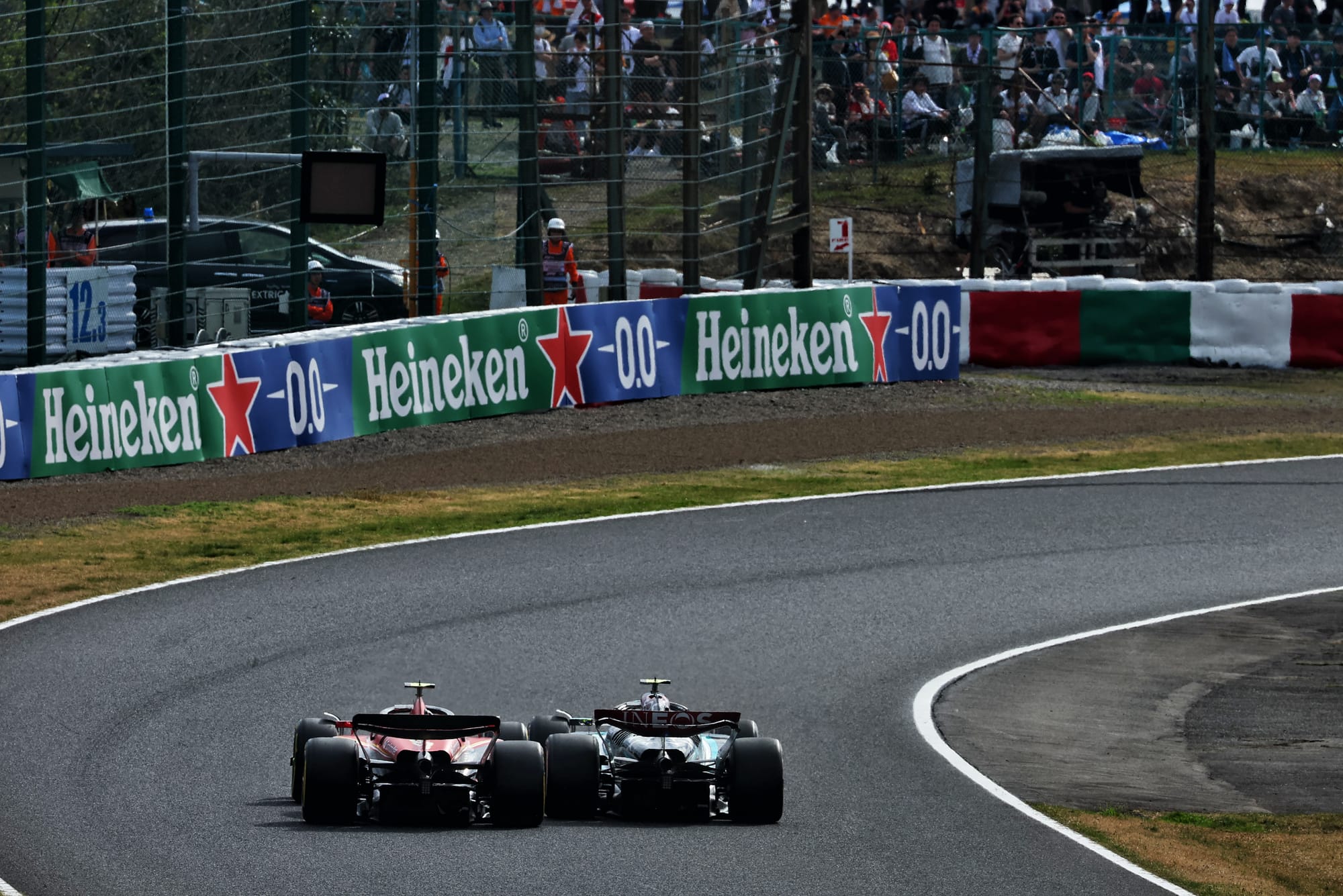
As for overtaking on the outside of a corner, the guidelines acknowledge that it is a more difficult move to pull off.
For a long time drivers have been taught from karting all the way through the racing pyramid that if you try to hang it round the outside, you are at risk of running out of road.
It’s often been left up to how hard certain drivers race. ‘Fairer’ drivers will leave a bit of room for their rivals, more ruthless drivers will edge them out.
But in recent years there has been a clear effort to define when it’s essential for a driver to leave space, and that’s the case in the new guidelines as well.
So, for a driver to be given room when overtaking on the outside, including at the exit of the corner, the overtaking car must:
- Have the front axle AT LEAST ALONGSIDE the front axle of the other car at the apex of the corner AND to the exit
- Be driven in a safe and controlled manner throughout the manoeuvre (entry, apex and exit)
- Be able to make the corner within the track limits
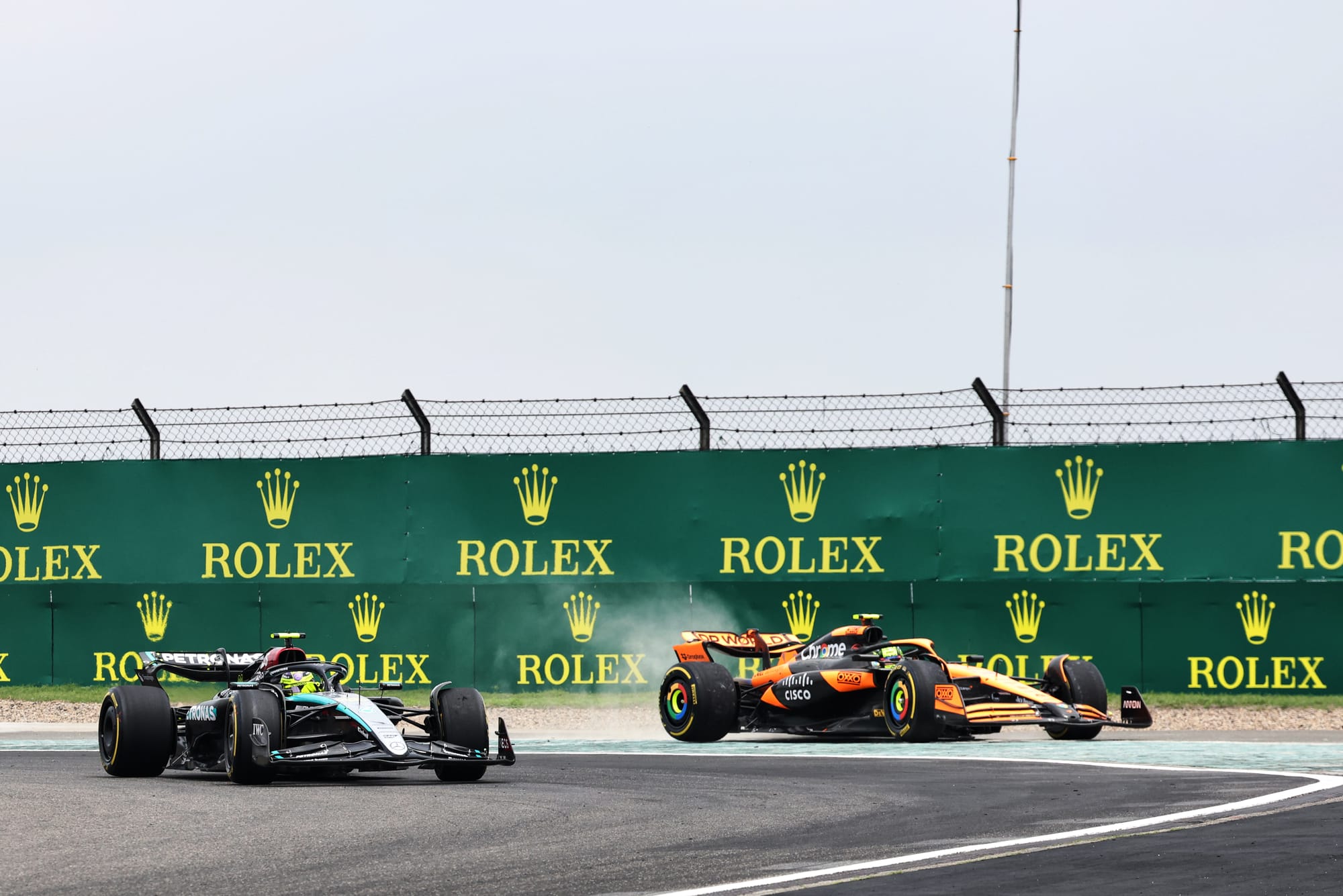
In a lot of cases this is going to leave a driver at the mercy of their rival or the laws of physics as cars on the inside wash out.
This isn’t intended to stop an optimistic pass, it just means drivers have to accept the risks involved. It is quite close to being a codified ‘live by the sword, die by the sword’ rule.
OTHER CONSIDERATIONS
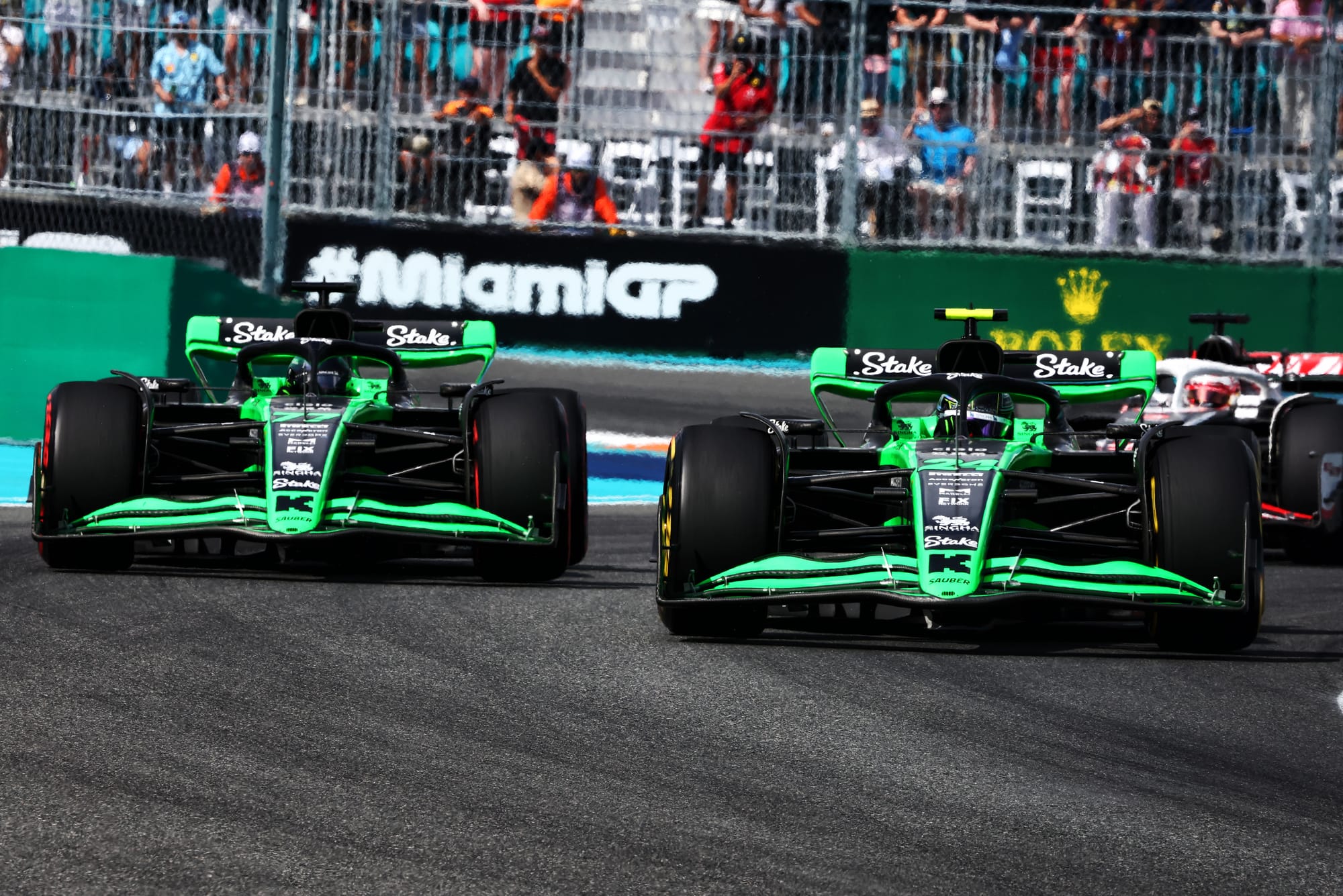
As was the case previously, the guidelines do try to tackle the awkward issue of how to approach chicanes and S bends.
In other words, what happens when a move into a sequence of turns starts with a car on the inside or outside - but that very quickly becomes the other side as the track changes direction.
Here, things are kept simple, presumably to avoid tying the guidance in knots trying to cover every eventuality in different corner types.
There are two points to consider:
- The guides for overtaking on the INSIDE and OUTSIDE may apply for each element of the combination
- HOWEVER, priority will be given to the first corner element. So if you didn’t FULLY follow the guidelines at the first corner, then you don’t get the benefit at the second
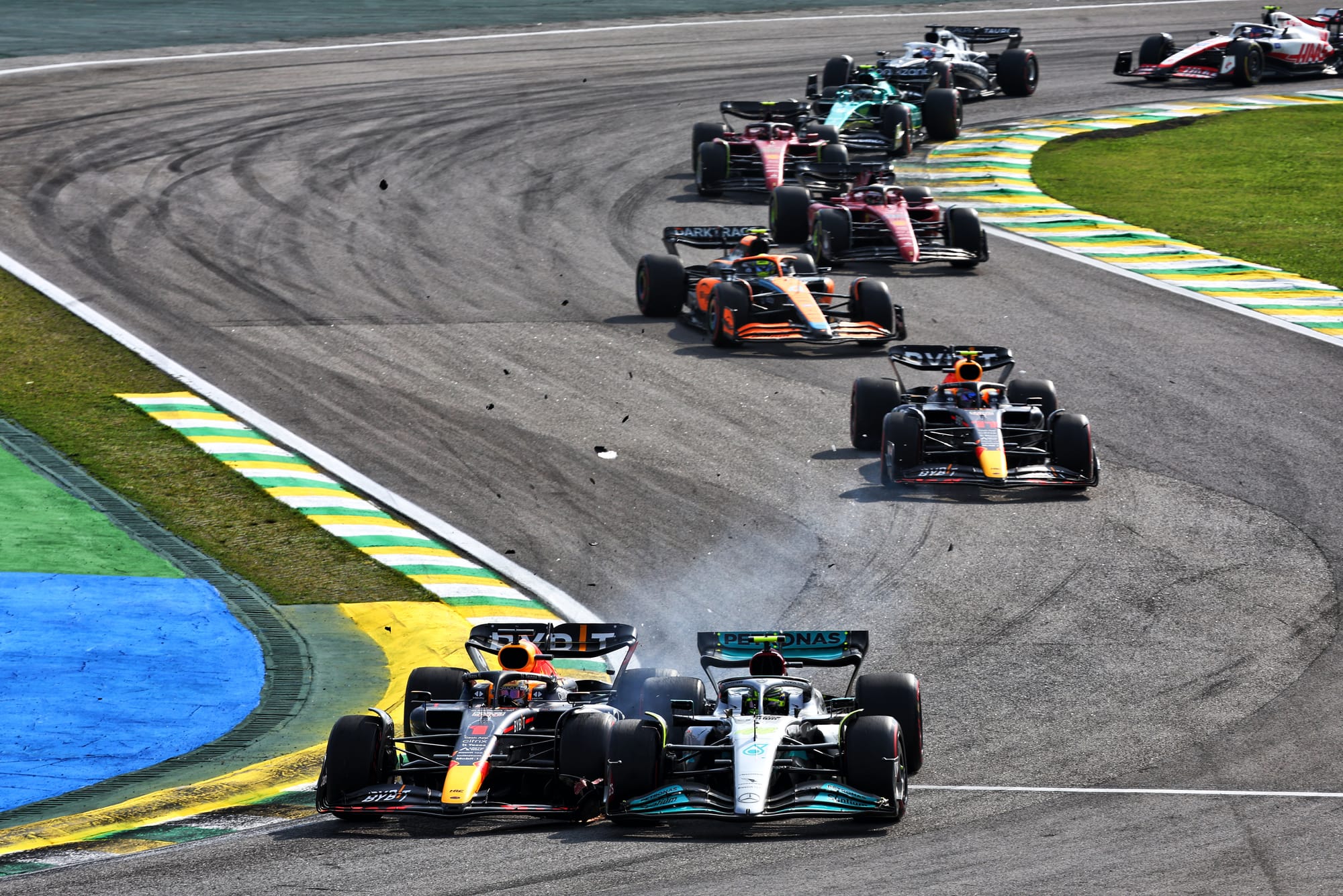
The Senna S at Interlagos is a relevant example. Drivers can collide at the second part - like Max Verstappen and Lewis Hamilton in 2022 - when a move around the outside in the first part puts that car on the inside for the second.
If a car is not at least fully alongside from apex to exit through the left-hand Turn 1 there, it is not going to get the benefit of the doubt if you then try to hang onto the inside at Turn 2.
A CLEAR MIAMI CASE STUDY
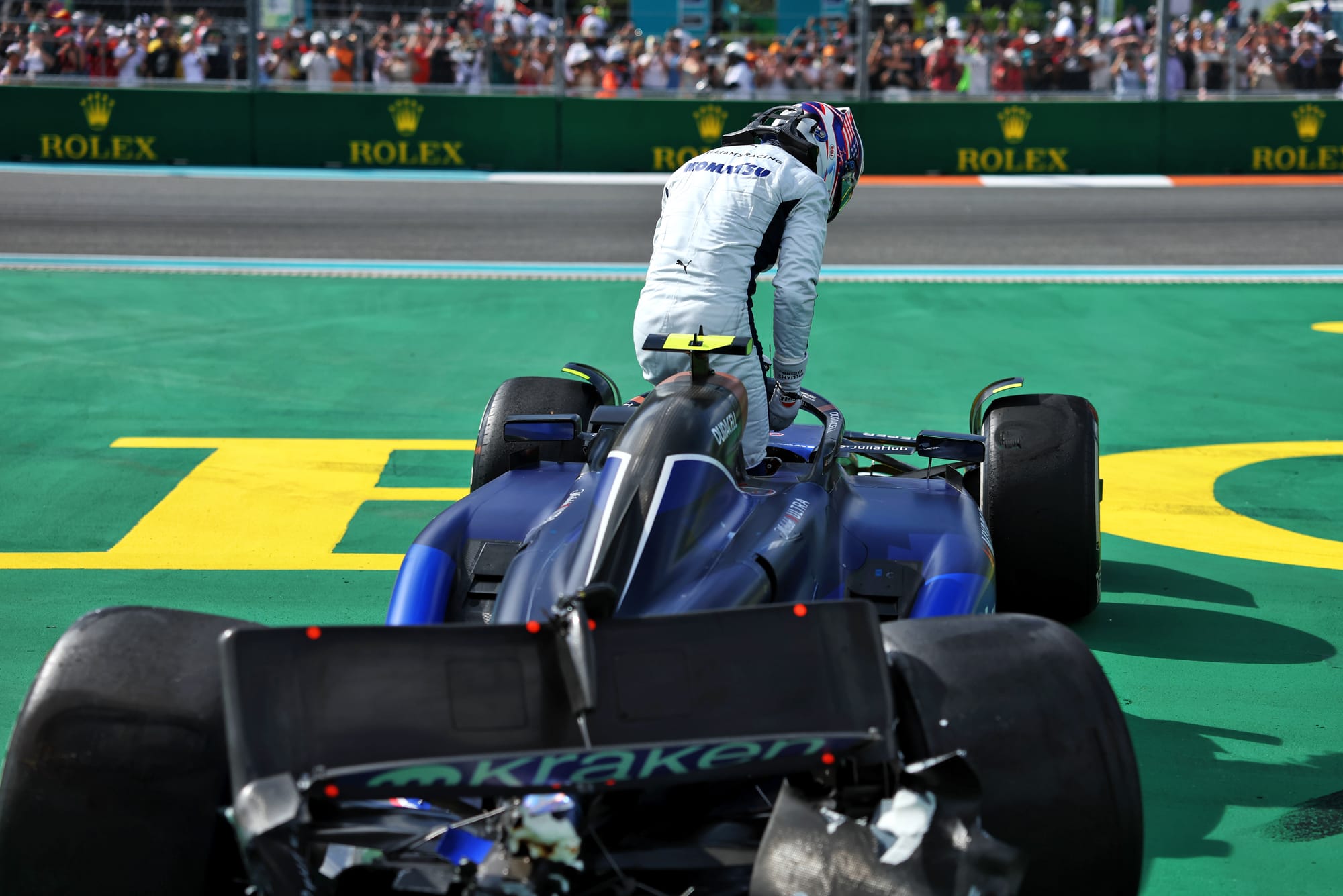
Kevin Magnussen was doomed by every element of these guidelines in the Miami Grand Prix when he collided with Logan Sargeant at Turn 3.
He clearly did not agree with the decision post-race and only said he would like more clarity on what is allowed. But, on reflection, it is clear why his collision breached the rules.
Magnussen is deemed to have tried to pass on the outside of Turn 2, meaning he needed his front axle at least alongside Sargeant’s front axle. That wasn’t the case and so he was not entitled to room.
A heavy hit for Sarge at his home race 😮💨
— Formula 1 (@F1) May 6, 2024
But this moment turned the #MiamiGP on its head 👀#F1 pic.twitter.com/vgj8C9D70f
Nor would he be entitled room as the track moved round to Turn 3 and Magnussen’s attempt became a pass on the inside - because his front axle was not quite alongside Sargeant’s mirrors at what would be deemed the apex.
And finally, viewing this as an S-bend sequence, the decision would be the same because Magnussen did not adhere to the guidelines for the first part (Turn 2) so doesn’t get the benefit of the doubt for the second part (Turn 3).
THE DANGER OF SPECIFIC POSITIONS
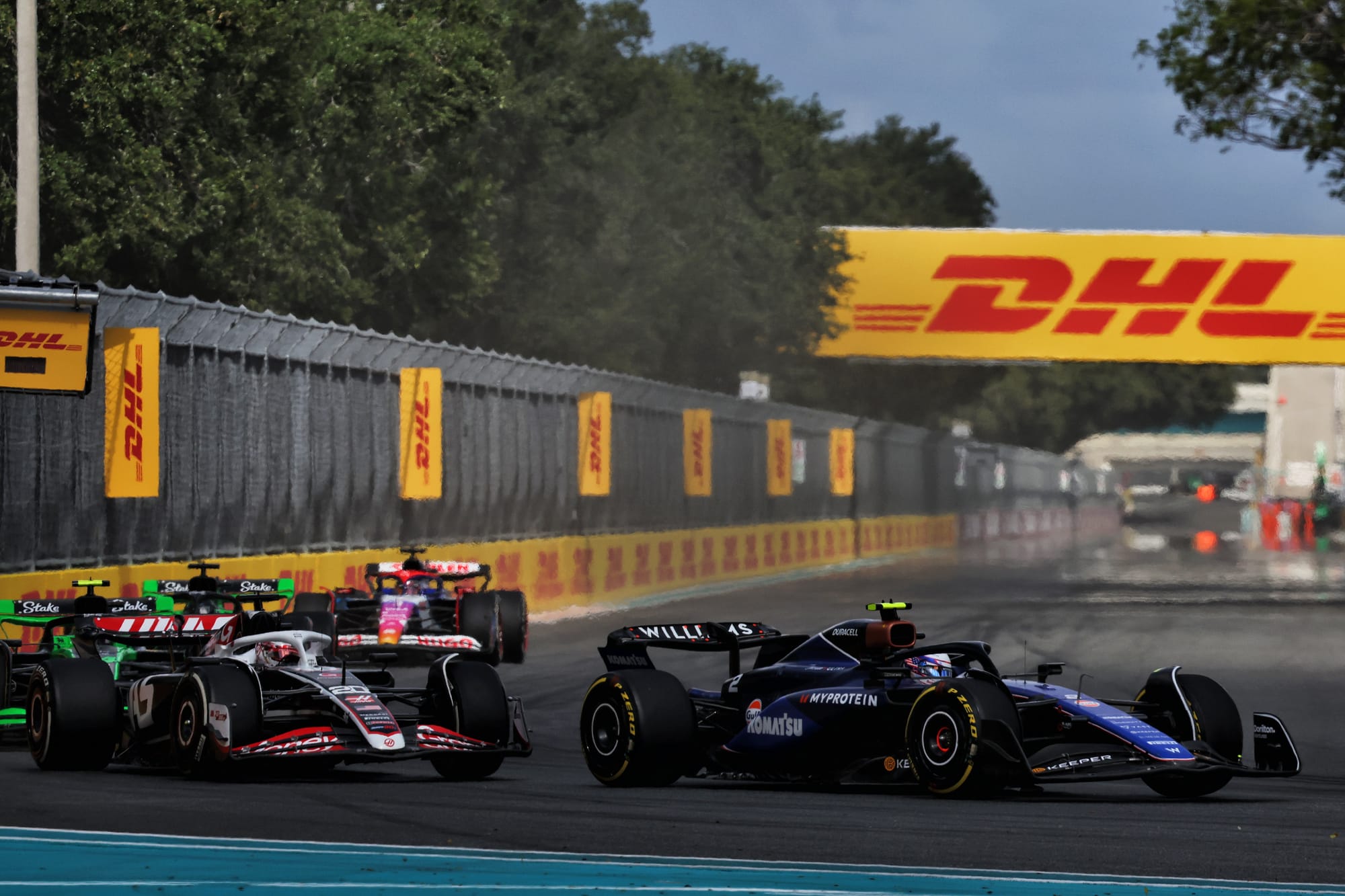
So, per the new guidelines, Magnussen was right to be punished. But the obvious question is: are these guidelines correct?
The problem with creating such specific reference positions for cars to be entitled to room is that you can empower each driver to behave in ways that are not conducive to good racing.
Overtaking drivers can be tempted to pull off wild moves on the basis they can get far alongside at the apex to avoid a penalty.
Defending drivers are effectively encouraged in some situations to take an attitude of ‘I’m allowed to turn in and let there be contact here because it will not be deemed my fault’.
This is where the other factors that the stewards take into account really need to be talked about more, and better understood. Because racing is about so much more than arbitrary car positioning at a given, fixed point in a corner.
Hard, fair fighting cannot be achieved by guidelines alone. Drivers need to accept that there needs to be some give and take, and for a mutual effort to be made for both cars to make it round a corner - not get wrapped up in technicalities.


